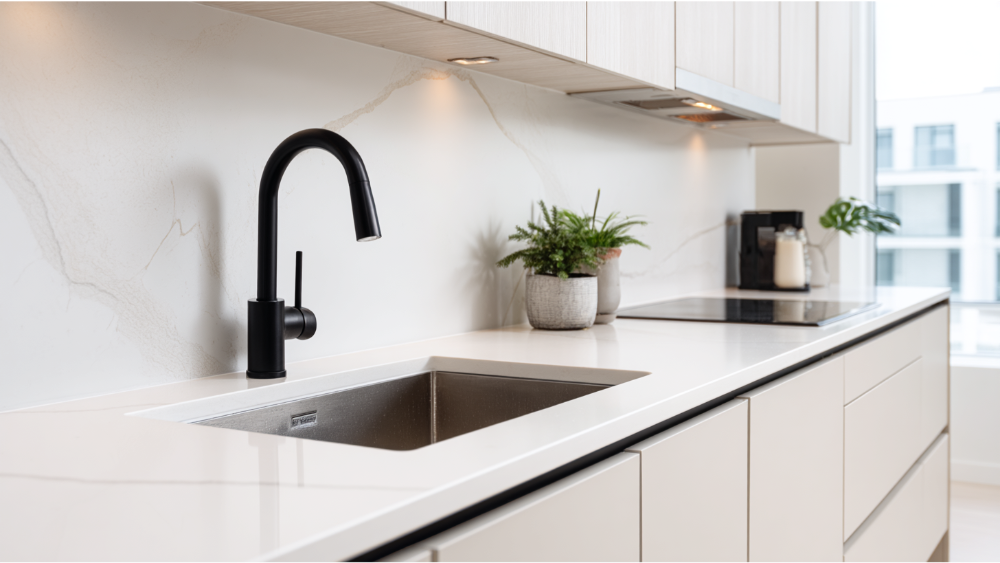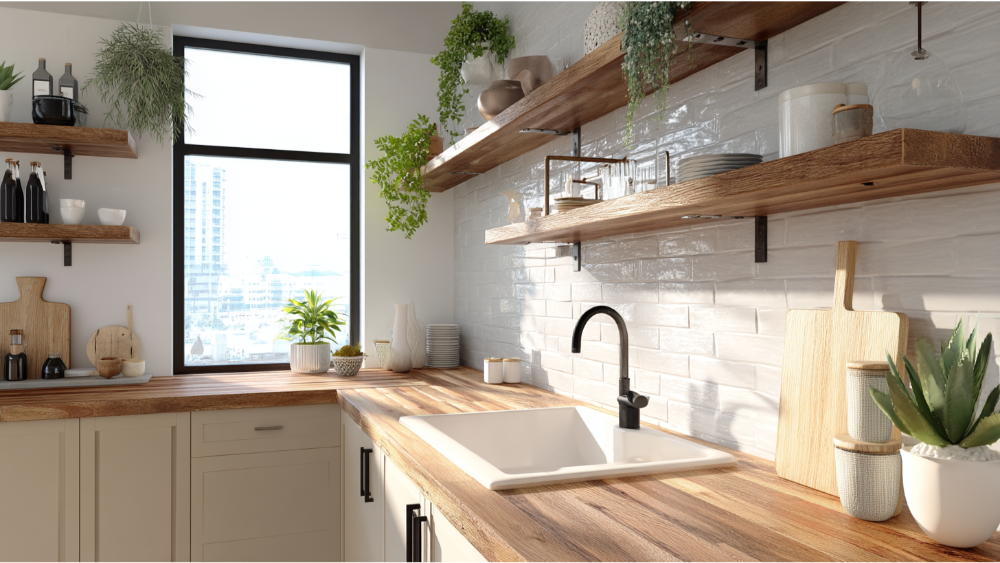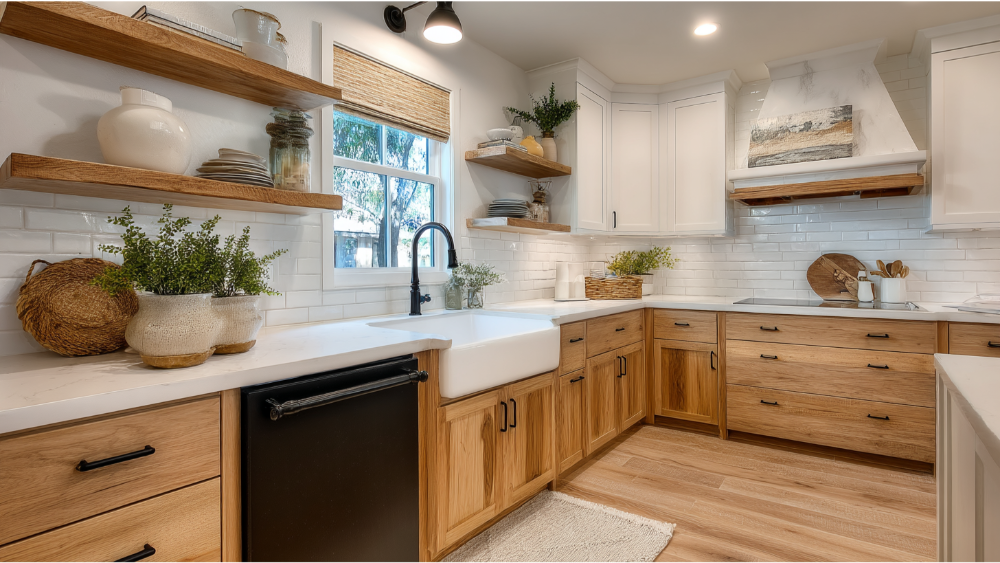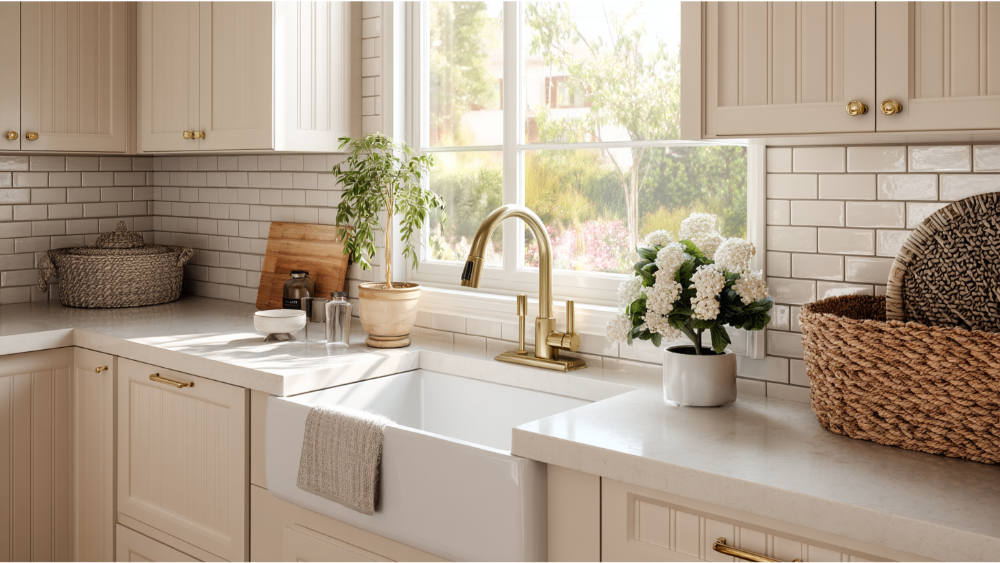
Quick Answer: How to Remove a Kitchen Faucet
To remove a kitchen faucet, first clear the cabinet space and shut off the hot and cold water supply valves. Open the faucet handles to drain remaining water, then use an adjustable wrench to disconnect the supply lines. Next, use a basin wrench to loosen and remove the mounting nuts under the sink. Once the nuts are off, return above the sink and lift the faucet out, cutting through old caulk or sealant if necessary. Finally, clean the sink deck thoroughly to prepare for your new faucet installation. With the right tools and a little patience, most homeowners can complete the process in under an hour.
More Details
If you’re planning to upgrade your kitchen faucet or you’re dealing with a leak or corrosion issue, learning how to remove kitchen faucet parts safely and properly is the first step to a successful replacement. Removing an old faucet can seem intimidating, but with the right tools, a little patience, and a clear process, it’s a task most homeowners can manage. In this comprehensive guide, our kitchen remodeling experts at America’s Advantage Remodeling walk you through how to remove a kitchen sink faucet from start to finish. Whether you’re replacing an outdated fixture or making space for a stylish new one, this tutorial has you covered.
Tools You’ll Need for Kitchen Sink Faucet Removal
Before you begin the removal process, gather all the necessary tools. Having everything close by will prevent delays once you’re working underneath the sink.
Basic Faucet Removal Tools
- Basin wrench – This is essential for reaching and loosening nuts behind the sink basin.
- Adjustable wrench – For loosening the cold water supply lines and hot water supply lines.
- Screwdriver – You may need both Phillips and flathead types depending on the faucet design.
- Bucket or box – To catch any residual water from the supply lines.
- Penetrating oil – Helps with loosening rusted or corroded hex nuts.
- Flashlight or work light – To illuminate the cabinet under the kitchen sink.
Optional but Useful Items
- Putty knife or utility knife – To remove old sealant from the sink deck.
- Dremel tool with metal cutting bit – A backup option if a nut is seized and cannot be loosened.
- Safety gloves and goggles – Protect yourself from metal shavings and debris.
Once your tools are assembled, it’s time to prep the area and get started.
Step 1 | Prep Your Kitchen Sink Area

Start by clearing out the cabinet beneath the kitchen sink. Remove cleaning products, trash bins, or storage boxes to give yourself plenty of room. Lay down an old towel or pad to rest on as you work, since the position under the sink can be awkward. Place a bucket beneath the faucet connections to catch water from the supply lines once they are disconnected.
Turn Off the Water Supply
Locate the shut-off valves underneath the kitchen sink and turn them clockwise to stop the flow of water. These valves control both the cold and hot water supply lines. If your home doesn’t have individual shut-offs, you’ll need to turn off the main water supply.
Drain the Faucet and Supply Lines
Open the faucet handles to release any remaining water from the lines. This step helps reduce pressure and prevents unexpected leaks as you disconnect parts.
Step 2 | Disconnect the Supply Lines
Using your adjustable wrench, unscrew the nuts attaching the cold and hot water supply lines from the faucet tailpieces. If the lines are stiff or corroded, spray them with penetrating oil and allow it to sit for a few minutes.
You may also need to disconnect the supply lines from the shut-off valves, especially if you plan to replace them entirely. Inspect the lines for wear or damage—if they appear brittle or frayed, now’s a good time to replace them. Many supply lines are made from PVC or braided stainless steel; choosing the right material is important for durability.
Step 3 | Remove Mounting Hardware

This is the step where things often get tricky. Kitchen sink faucets are usually secured with one or two large mounting nuts that hold the faucet in place beneath the sink.
Locate and Loosen the Mounting Nuts
Using your basin wrench, reach up behind the sink basin and locate the hex nuts. These nuts are typically located at the base of the faucet tailpieces. The basin wrench’s pivoting head is designed for awkward positions and tight spaces, making it ideal for this job.
Turn the nuts counterclockwise. If the nuts are corroded and won’t budge, apply more penetrating oil. Let it soak, then try again. In some stubborn cases, you may need to cut the nut using a Dremel tool with a metal bit.
Dealing With a Faucet Sprayer
If your kitchen faucet includes a separate sprayer, you’ll need to disconnect the hose from the faucet body. Most are secured with a clip or threaded connection. Unscrew the connection and remove the sprayer line.
Step 4 | Remove the Old Faucet
Now that you’ve loosened and removed the mounting nuts under the sink, it’s time to take out the old faucet. Head back above the sink and try gently pulling the faucet up and out of its position. In many cases, it will slide right out without much resistance.
If your faucet is stuck, don’t panic — this is very common. Over time, mineral buildup, rust, or hardened sealant can cause the base of the faucet to bond tightly to the sink. Instead of forcing it (which could crack your sink or countertop), try these pro tips:
- Loosen sealant: Run a putty knife or utility knife carefully around the base of the faucet to break any caulk or plumber’s putty seal.
- Apply gentle pressure: Rock the faucet back and forth to loosen its grip before pulling upward.
- Use penetrating oil: If corrosion is the culprit, apply a small amount of WD-40 or a similar penetrating oil around the base, let it sit for 10–15 minutes, then try again.
When lifting the faucet, be mindful of the sink surface and countertop — use a towel underneath the base to prevent scratches or chips. Also, keep a bucket or rag nearby, as a small amount of water may still drain from the supply lines.
Once the faucet is out, take a moment to inspect and clean the area. Remove any old caulk, plumber’s putty, or debris from the sink deck so the new faucet sits flush and creates a watertight seal. This prep work may seem small, but it makes a huge difference in the longevity and leak resistance of your new installation.
Step 5 | Clean the Sink Deck

Use your putty knife or utility blade to remove any old sealant or plumber’s putty from the faucet mounting holes. Wipe the area clean with a damp cloth so that the surface is ready for the new faucet.
Inspect the faucet holes to ensure they’re clear and not obstructed by debris. If you’re switching from a three-hole faucet to a single-hole model, you’ll need a deck plate or cover plate to hide the unused holes.
When Things Don’t Go as Planned
Corroded Nuts and Threads
Over time, faucet mounting hardware can corrode and fuse to the sink or countertop. If penetrating oil and a basin wrench don’t work, your best solution may be to simply cut the nut using a Dremel tool.
Limited Access Under the Sink
Tight cabinet spaces can make it difficult to maneuver tools. Try using a compact basin wrench or a socket wrench attachment designed for faucet nuts.
Broken Parts or Leaks
If you encounter broken hardware, a rusted pipe, or a leak during removal, consider calling a professional. At America’s Advantage Remodeling, we’ve removed and installed hundreds of kitchen sink faucets. If the job becomes more than a basic DIY project, we’re here to help.
After You Remove the Faucet: What’s Next?

Once the old faucet is removed and the sink is clean, it’s time to either install your new faucet or move forward with your kitchen remodeling project.
Check the Supply Lines
Inspect the supply lines and shut-off valves. Replace any parts that show signs of aging or corrosion. Braided stainless steel lines are a reliable and long-lasting upgrade.
Prepare the New Faucet
Unbox your new faucet and review the manufacturer’s instructions. Lay out all the parts and ensure that everything is included: the spout, mounting plate, washers, nuts, screws, and any specialty tools or rods.
Line Up the New Faucet
Place the new faucet into the sink holes and ensure proper alignment. Pay attention to the direction of the faucet handles and spout for optimal use. From underneath, install the rubber or plastic gasket and thread the mounting nuts onto the faucet tailpieces in a pair to ensure even tightening. Tighten the nuts securely but avoid over-tightening, which could crack plastic components or damage threads.
Pro Tips From America’s Advantage Remodeling
- Take a picture of the plumbing under your sink before you begin. This can help you remember how parts were attached if you’re reinstalling.
- Always use a basin wrench for faucet nuts. Other tools might work, but nothing beats a basin wrench in tight spots.
- Don’t ignore damaged threads. If the faucet or line threads are stripped or worn, replace them to avoid leaks.
- Use thread sealant tape on threaded connections. It helps prevent leaks and makes future removal easier.
- Lay out all parts before starting. Many homeowners start installing a new faucet only to realize they’re missing a screw or rubber washer halfway through the job.
- If you prefer visual guidance, watch a detailed video tutorial on how to remove kitchen faucets safely and efficiently.
- Choose a reputable brand for your new one to ensure quality and durability.
- Our suggestion: continue to maintain your faucet regularly to extend its lifespan and avoid future leaks.
Frequently Asked How to Remove Kitchen Faucet Questions
How long does it take to remove a kitchen faucet?
Most faucets can be removed in under an hour. If corrosion is present, it could take longer.
Can I remove a faucet without a basin wrench?
Technically yes, but it will be much harder. A basin wrench is designed specifically for faucet nuts and makes the job easier.
What if my faucet is leaking at the base?
This is often caused by a worn-out seal or cracked housing. Removing and replacing the faucet is usually the best fix.
Should I replace supply lines when installing a new faucet?
Yes. Replacing supply lines when installing a new faucet reduces the risk of future leaks and improves water flow.
What if I strip the mounting nuts?
If the threads are damaged, you may need to cut them off with a Dremel tool. Replacement parts can be found at most hardware stores.
Conclusion
Now that you know how to remove kitchen faucet assemblies correctly, you’re one step closer to completing your DIY kitchen update. Removing a kitchen sink faucet might seem complex, but when broken down into manageable steps and backed by the right tools and guidance, it’s a task any determined homeowner can handle.
From identifying the hex nuts to using a basin wrench in awkward cabinet positions, understanding each part of the process helps you avoid frustration and finish the job efficiently. Whether you’re simply replacing an old faucet or preparing your kitchen sink area for a larger remodel, this guide has you covered from start to finish.
If you’d rather leave it to the professionals or run into trouble during the removal process, America’s Advantage Remodeling is here to help. We specialize in kitchen faucet replacement, kitchen sink installations, and full kitchen remodeling throughout Northern California.
Ready to get started? Contact us today or explore our kitchen remodeling services to discover how we can help bring your dream kitchen to life.
CONTACT US
Our Services
Areas We Serve
Certificate






